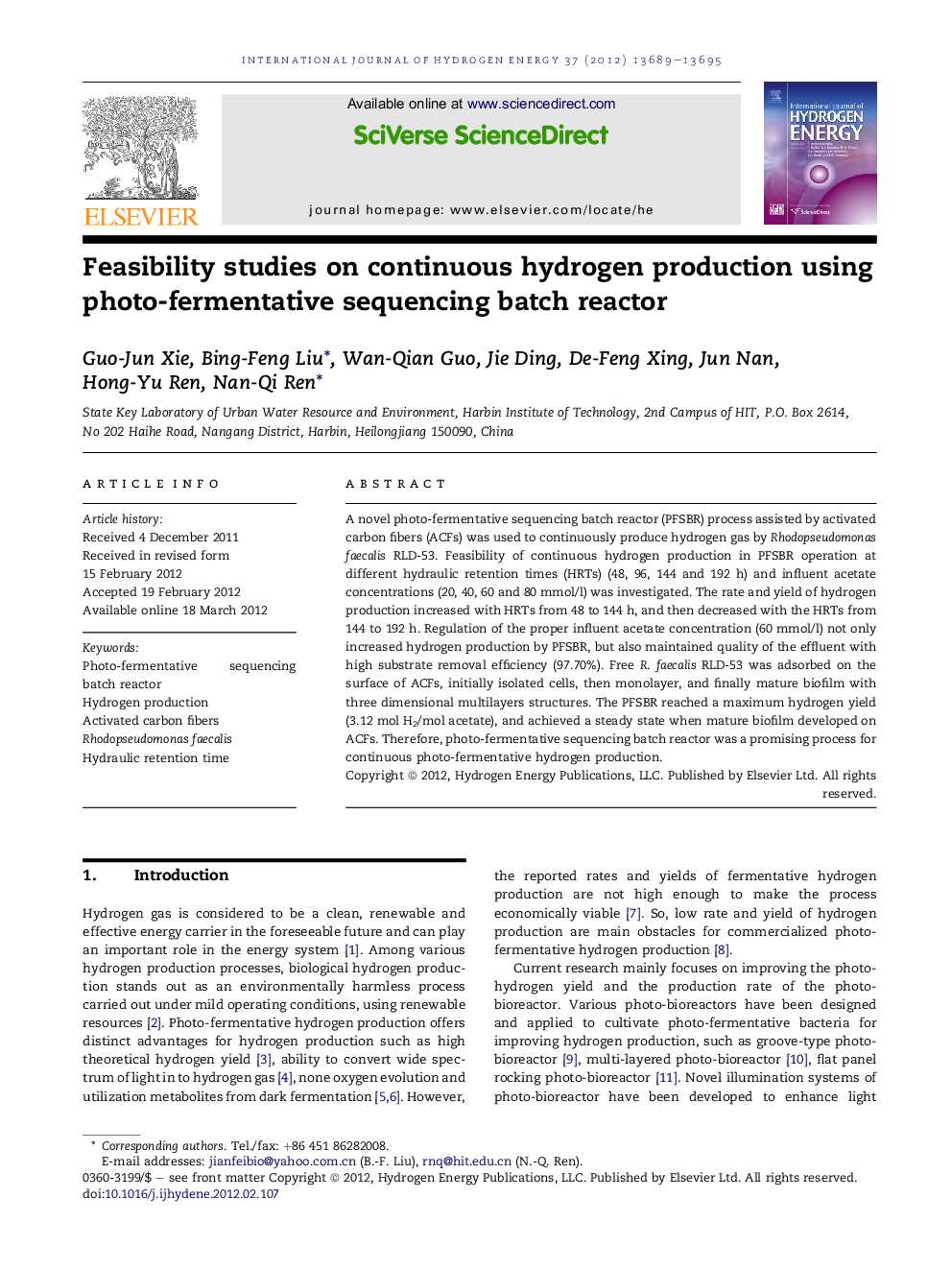| Article ID | Journal | Published Year | Pages | File Type |
|---|---|---|---|---|
| 1282271 | International Journal of Hydrogen Energy | 2012 | 7 Pages |
A novel photo-fermentative sequencing batch reactor (PFSBR) process assisted by activated carbon fibers (ACFs) was used to continuously produce hydrogen gas by Rhodopseudomonas faecalis RLD-53. Feasibility of continuous hydrogen production in PFSBR operation at different hydraulic retention times (HRTs) (48, 96, 144 and 192 h) and influent acetate concentrations (20, 40, 60 and 80 mmol/l) was investigated. The rate and yield of hydrogen production increased with HRTs from 48 to 144 h, and then decreased with the HRTs from 144 to 192 h. Regulation of the proper influent acetate concentration (60 mmol/l) not only increased hydrogen production by PFSBR, but also maintained quality of the effluent with high substrate removal efficiency (97.70%). Free R. faecalis RLD-53 was adsorbed on the surface of ACFs, initially isolated cells, then monolayer, and finally mature biofilm with three dimensional multilayers structures. The PFSBR reached a maximum hydrogen yield (3.12 mol H2/mol acetate), and achieved a steady state when mature biofilm developed on ACFs. Therefore, photo-fermentative sequencing batch reactor was a promising process for continuous photo-fermentative hydrogen production.
► A novel photo-fermentative sequencing batch reactor (PFSBR) process was developed. ► Bacteria were immobilized on activated carbon fibers (ACFs) to produce hydrogen. ► Performance of PFSBR closely depended on the biofilm development on ACFs. ► Stable performance of PFSBR is potentially suitable for long term operation.
